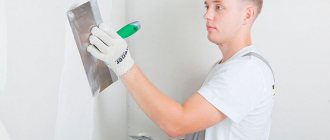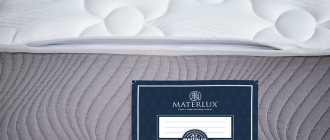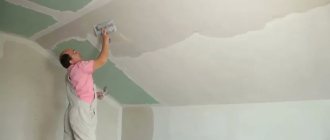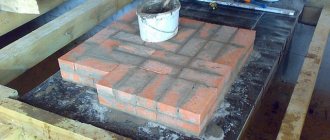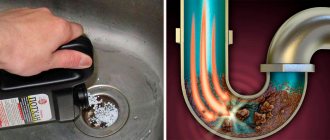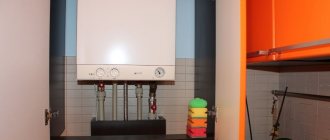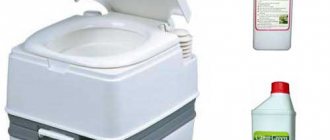- July 27, 2019
- Repair Tips
- Kristina Degtyareva
Construction or renovation is close to completion, the installation of drywall sheets is coming to an end, and therefore a number of questions arise, for example, whether drywall can be painted with paint or not, how to prepare it for this procedure, what materials should be used. When painting drywall, you will have to take many nuances into account. To make your task easier, we have collected all the recommendations in one material. We will tell you what preparatory work will need to be done and talk about the requirements for coloring compositions. In addition, you will find the answer to the question of what paint to paint drywall - the rating awaits you below!
Advantages of gypsum plasterboard staining
There are many advantages to this finishing method. Firstly, it is financial accessibility, and secondly, all painting work can be done with your own hands. Moreover, it is possible to choose exactly the color that matches the original design idea, and if you get tired of it over time, the surface can be repainted with a new one. In general, painting drywall with paint is a demanding task, but not at all difficult. How to prepare for it? Let's tell you right now.
Applying primer
High-quality painting of plasterboard without putty is impossible, so plasterboard walls can be treated with acrylic-based primers. Such primers have high permeability and better antiseptic properties.
Action plan:
- The primer composition should be distributed over a previously leveled and dried surface.
- A roller measuring 200-300 mm is used. You should work it thoroughly in the inner corners and hard-to-reach areas.
- During processing, all movements must be smooth, and gaps in the layers should not be allowed.
- It is enough to go through the primer 2-3 times, maintaining an interval of 4-5 hours. This time is enough for the primer to absorb and dry.
Preparatory stage
Experts do not recommend applying any paint to an unprepared surface. First, the drywall must be primed and then putty applied to it. For what reasons should this be done? Preliminary preparation is necessary in order to:
- increase the strength of the material;
- enhance the adhesive properties of the surface;
- reduce paint consumption due to the fact that it will be less absorbed into the surface.
Sometimes, after drying, spots appear on the drywall. This drawback can also be eliminated using putty. To carry out the preparatory work, you will need the following tools and materials:
- construction mixer;
- sandpaper – medium and coarse;
- brush (you can use a roller instead);
- screwdriver;
- primer;
- spatulas;
- serpyanka;
- putty – you will need a starting and finishing coat;
- metal corners.
As soon as everything necessary for work is ready, you can begin preliminary work. First of all, you should carefully inspect the surface and eliminate installation defects, if any.
The next stage of work is applying a primer to the drywall. Immediately after this, it is necessary to strengthen the butt and corner parts, do the initial puttying and grouting. Then you need to repeat the priming of the drywall, finishing putty, and then sand the surface. The final stage is finishing priming. Let's consider all the stages in order.
Seam treatment and re-priming
The next step is to reinforce the joints with sickle tape and putty them. A tape with a width of 5 to 10 cm is applied to the seams so that the heads of the screws are also covered. You need to apply a putty solution on top and “stretch” it over the surface with a wide spatula.
After drying (this process lasts approximately 12 hours), the seams are rubbed with sandpaper or an abrasive mesh. To leave no doubt about the excellent result, shine a flashlight on the wall at a slight angle. The slightest unevenness will reveal itself as a shadow.
Next, a secondary primer is applied in one layer. If painting without putty is meant, then an additional layer of primer is applied. If you want to do everything at a professional level, move on to the next stage.
Padding
When speaking about whether it is possible to paint drywall without a preliminary primer or not, experts give a negative answer. The thing is that applying a primer improves the adhesive and water-repellent properties of plasterboard. In this case, a special antiseptic should be added to the finished composition, which will prevent the appearance of mold.
As for the choice of primer, any mixture will do, except alkyd primer - it is not suitable for drywall. The primer can be applied with a roller or brush.
DIY drywall painting
If you have decided on all this and think that the installation of drywall was done correctly, the joints are sealed correctly, let's start painting it. Here you can get a little confused, and, most importantly, wait until the paint dries (for water-based compositions this is 1-2 hours) and then look at shade. It is important to understand that paint applied in one layer to green or gray plasterboard can show through and the shade may differ. The disadvantage of plasterboard structures is that it noticeably transmits vibrations and if installed incorrectly, the plastered areas at the joints of gypsum plasterboard sheets may crack , which will ruin the entire finish.
If you carry out the installation yourself, take into account all the nuances of installing gypsum boards, and there are many of them, or order installation from professionals. Pour paint into the tray. Roll out the roller in the paint so that it is well and evenly saturated with paint . This may take 2-3 minutes, but this is only the first time.
You can even leave the roller to soak for 5 minutes, it will be even better, but without fanaticism. Having evenly applied and soaked the roller with paint, roll it out in the tray so that there is enough paint on it for application and it does not drip off it. Do not press the roller too hard when rolling.
Let's start painting again with preparation, namely with those places that need to be covered with masking tape so as not to paint them. These are places under the ceiling, under the ceiling plinth, at the joints with other painted parts of the wall, etc. Everything needs to be carefully and tightly sealed with masking tape so that the paint does not leak there.
Which composition to choose
All putties that you can find in construction stores can be divided into three categories:
- Plaster. They are quite often used specifically for working with drywall. Such compositions are characterized by rapid setting and excellent adhesion. True, such putties also have a disadvantage - low resistance to moisture.
- Polymer. They have virtually no drawbacks, the only drawback being their high cost.
- Cement. They are considered by experts to be the best when it comes to drywall. Although such compositions take a long time to dry, they are resistant to moisture.
Drywall paint: which one to choose?
There are a huge number of options for paint and varnish materials. But not all are equally suitable for drywall. So what paint should you use to paint drywall? According to experts, the best option is water-soluble paints. But any paints that contain lime are contraindicated for such a coating.
Of course, it is recommended to choose paint for plasterboard surfaces taking into account the expected operating conditions; you should also focus on the purpose of the surface. Because of this, the texture of the paint is of particular importance. Thus, glossy surfaces can visually expand the space, and they are not difficult to care for. However, the process of painting drywall with glossy paints is labor-intensive; any, even the most minor, flaws will be clearly visible. Matte finishes are one of the best options for ceilings. They are able to hide defects, however, it is quite difficult to care for such surfaces. A compromise option is semi-matte paints, which have the advantages and disadvantages of both options.
Question of color
When talking about which drywall paint to choose, you should separately consider its color. So, any bright poisonous shades are not suitable for the ceiling. Large surfaces painted in rich colors look great in large rooms, but they are simply out of place in cramped hallways or small kitchens. Designers recommend painting the walls in the living room, hallway, and bedroom in a darker shade compared to the ceiling. This will avoid the feeling of pressure from being in the room. It is not recommended to use the same shade for all surfaces - the ceiling, the floor, and the walls. Contrasting colors can only be used in spacious rooms.
Enamel paints
Beginning repairmen often ask whether it is possible to paint drywall with enamel paint. Experts answer: not only is it possible, but it is necessary. This option is considered preferable for several reasons: firstly, enamel paints dry quite quickly, they are durable and allow you to cover the surface of drywall as tightly as possible. True, such paints and varnishes also have disadvantages. For example, they are quite toxic, which means they are not suitable for all rooms. Another disadvantage is the high cost, sometimes simply unreasonably high. It should also be taken into account that before painting with enamel, drywall must be carefully prepared: in addition to the procedures described above, it is necessary to treat the surface with PVA glue.
Water-based paints
When talking about what paint to paint drywall with, we cannot fail to mention water-based paints. They are incredibly easy to apply to the prepared surface, wash off easily from brushes, which means they are suitable for use even by beginners in painting. This paint has many positive properties: it creates a pleasant velvety texture, penetrates perfectly into drywall and thoroughly covers it. When painting drywall with water-based paint, a thin matte film with breathing pores is formed, completely invisible to the naked eye. It should be noted that such materials are environmentally friendly, therefore they are perfect for any residential premises.
Of course, it was not without its drawbacks. For example, the question often arises about whether it is possible to paint drywall in a bathroom with water-based paint. Let's say right away: such compositions are afraid of dampness. Therefore, water-based emulsion is not the best option for rooms with high humidity. Another disadvantage of water-based paint for drywall is that it costs too much.
Water-repellent paints
Water-repellent paints, often called water-dispersion paints, are much better suited for wet rooms. They have many advantages: they dry very quickly, do not have an unpleasant odor, and do not turn yellow over time. In addition, drywall painted with water-repellent paint can be washed up to two thousand times - the surface will not even fade. It is recommended to apply water-repellent paints in three layers. They contain a variety of components, for example, silicate, silicone, acrylic. All this affects the quality of the paint and varnish material.
The best silicone water-based paints
Which paint for drywall should I choose? Experts recommend paying attention to compounds made on the basis of silicone resin: they repel water, and therefore are suitable for rooms with aggressive environments. Which colors to choose? Please note the following:
- TIKKURILA Euro Extra 20. The products of this Finnish company can be called synonymous with quality. Therefore, it is not at all surprising that the winner of the rating was TIKKURILA Euro Extra 20 paint. This composition seemed to combine all the advantages of modern silicone paints and varnishes. It is characterized by resistance to ultraviolet radiation, environmental friendliness, and pure color. True, you should only choose paint that was made in Finland, because the one produced in Russia does not always match the quality of the famous brand. Professionals note: this paint is odorless and resistant to water and household detergents. Its only drawback is the high price, but the excellent quality is worth the money spent.
- Caparol CapaSilan. Which paint for drywall should I choose? Pay attention to Caparol CapaSilan. This paint has increased hiding power - in just one pass, professionals can thoroughly paint ceilings and walls. This, of course, simplifies repair work. Moreover, when using Caparol CapaSilan, cracks up to two millimeters wide can be closed! Painted drywall repels water and dust and is easy to clean using regular detergents. It was not possible to take first place in the rating of Caparol CapaSilan paint only because of its even higher price.
- LITOKOL LITOTHERM PAINT SIL. Thinking about what paint is best for drywall? Pay attention to the premium paint and varnish material called LITOKOL LITOTHERM PAINT SIL. Why is she so good? Professionals note that the surface painted with it is resistant to dirt and humidity, and is not afraid of ultraviolet radiation. Another significant advantage is the huge range of colors. In general, this paint is good for almost everyone. However, in our ranking she only took third place. Why? The thing is that the company’s policy provides for the use of not only paint, but also plaster, primer and putty of the LITOKOL brand. Otherwise, the quality of the finishing coating, experts say, is noticeably reduced.
- ALPINA EXPERT. This paint is included in our rating because it has the lowest price and is very economical in consumption. On average, about 140 milliliters of finishing material will be required per square meter of surface. True, paint also has negative sides. For example, it is not suitable for rooms where there are temperature changes and too high or low humidity levels. In addition, ALPINA gets dirty quickly and is difficult to wash.
Features of drywall and its varieties
Nowadays it is very difficult to find a room or residential apartment that does not have drywall. This versatile material provides enormous scope for creativity and competent design. It gained such popularity due to a number of advantages:
- Ecologically friendly;
- Not afraid of fire;
- Affordable for almost any consumer;
- Blocks out extraneous noise well;
- After repair, a minimal amount of waste remains from it;
- Adjusts to room humidity; if necessary, absorbs excess moisture, and when the air dries out, releases it;
- Unpretentious in finishing and repair;
Drywall has several varieties, each of which requires its own approach.
- Consisting of sheets (standard);
- Moisture resistant. Only this type is suitable for arranging bathrooms and restrooms.
- Ceiling. It is used when installing simple or multi-tiered ceilings.
- Fire resistant. Not afraid of open flame, does not deform.
- Arched. Suitable for the manufacture of non-standard shaped elements.
- Acoustic. This type of drywall is used exclusively for rooms with high noise levels and requiring mandatory sound insulation. Such gypsum boards are characterized by the presence of frequent holes a centimeter wide and a soundproof layer.
The best silicate paints
The use of so-called liquid glass in paint and varnish production makes it possible to obtain a plasterboard surface that is resistant to a variety of negative factors.
Just imagine: silicate paint can be used not only for interior but also for exterior work! At the same time, most manufacturers offer quite affordable prices, which allows you to get a good option for decorating bedrooms, kitchens, bedrooms and children's rooms. What is the best paint for drywall? According to professionals, it is recommended to give preference to the following:
- TIKKURILA FINNGARD SILIKAATTIMAALI. The main advantage of this paint is its wide temperature range of application. Drywall painted with this material will not lose its attractiveness either in frost of -50 degrees or in heat of +60. In addition, when painting, a vapor-tight layer is created that has moisture- and dirt-repellent characteristics. It is worth noting that TIKKURILA FINNGARD SILIKAATTIMAALI was liked not only by finishers - it is often used by owners of small sea vessels, which, of course, is an excellent confirmation of the quality of the material.
- BAUMIT SILIKAT COLOR REPRO. This paint can be classified as an elite quality building material. Liquid potassium glass is an excellent binder; it is characterized by inflammability, resistance to fading, dust, dirt-repellent properties, and vapor permeability. The only thing that does not please specialists and ordinary people is the rather high consumption: about 500 grams of paint may be needed per square meter. Another disadvantage is the temperature range. If the room temperature is below +8 degrees, the paint layer is unlikely to retain its decorative properties.
- Ceresit "ST 54". Are you choosing drywall paint for walls? We recommend paying attention to silicate water-based paint “Ceresit”. It has good hiding power, it contains antifungal components, moreover, the paint is completely environmentally friendly and affordable. True, there are a number of disadvantages; for example, the surface must be perfectly prepared before painting. It is best to use plaster compositions made on a mineral basis.
Safety precautions
Before starting painting work, you must take precautions: make sure that the building materials are not toxic, wear protective clothing, glasses for repair work, check the working condition of the tool, and the ventilation outlets in the room.
You should be extremely careful with paint materials containing toxic substances. If used incorrectly or carelessly, they can cause harm to health.
It is prohibited to use liquids such as toluene, leaded gasoline, benzene as a cleanser for the skin of hands, clothing, tools, or for staining.
You should be extremely careful with paint materials containing toxic substances.
Acrylic paints
Acrylic paints are great for drywall. They are inexpensive, easy to apply, and very durable. Of course, such paints are somewhat inferior to compositions based on silicone and silicate, but they are well suited for interior decoration. The following paints received high marks from experts:
- DULUX MASTER LUX AQUA 40. This paint is the best option for painting plasterboard walls and ceilings. The main characteristic of the material is its light absorption. Thanks to this property, the paint is able to mask minor surface errors. The covering power of the composition is high enough that in order to get an ideal wall or ceiling, just a couple of layers are enough. Add here the absence of unpleasant odors during operation, acceptable consumption and environmental friendliness of the material - and you will understand why this paint is quite expensive.
- ALPINA RENOVA. The experts also liked the white paint for plasterboard ALPINA RENOVA. The main advantage can be considered the preservation of the original whiteness for seven years after painting the surface! However, you can add any color to the base, of course, produced by ALPINA - in this case, the paint will not turn yellow until the next repair. Caring for drywall painted with this composition is quite simple: it does not fade and is not afraid of dirt and dust. It is also important that painted surfaces withstand temperature changes and high humidity. The only thing that can be considered a drawback is the high consumption: about 250 grams per square meter.
- FARBITEX PROFI. This is a budget option for drywall paint for walls and ceilings. Its main ability is water-repellent, thanks to which the paint can be used in living rooms, as well as in the kitchen and bathroom. The consumption is quite economical: only 90-100 grams of paint are required per square meter. In addition, FARBITEX PROFI is characterized by a low price. The composition also has negative sides, for example, too thorough wet cleaning can lead to complete erasure of the coating.
Is it possible to paint without putty?
In order to save money, paint is applied directly to plasterboard sheets. The quality of work is noticeably reduced.
This wall decoration is suitable for work, warehouse or industrial premises. But for living rooms, putty must be applied. In this case, partial use of leveling paste is possible. Be sure to coat the joints and fastenings. Surfaces must be treated twice with an antifungal priming compound. But even after this, unevenness and roughness will remain noticeable. And the general appearance of the room will not be attractive. It’s better to choose paint from budget series, so that high consumption doesn’t hit your pocket too hard.
This wall decoration is suitable for work, warehouse or industrial premises.
Latex based paints
Having trouble choosing drywall paint that is durable and inexpensive? Professionals advise choosing latex paints.
Previously, they were made on a rubber basis, but today polymers are used for them, which has significantly reduced their price. In terms of their characteristics, such paints and varnishes are second only to silicone paints. Which latex paint for drywall should I choose? Experts recommend choosing materials such as:
- TIKKURILA EURO POWER7. This coloring is ideal for various types of surfaces, including drywall. It can be diluted with water - no more than 5-10%, the amount of water depends on the method of application. The advantages of the paint include average consumption (about 110 ml per square meter), resistance to moisture, easy care - you can use detergents to wash surfaces.
- Dufa Retail Eurolatex 3. German latex paints - an example of the highest quality combined with an affordable price. Professionals say: the paint has incredible covering power, has a long service life, and even aggressive household chemicals can be used for cleaning. The only downside is that after drying the color of the paint may become darker.
- DULUX Bindo 7 BW matte. This latex paint is characterized by a high cost. This can easily be explained by the fact that it belongs to the category of professional materials. When applied, no drips or streaks are formed, the paint does not splatter, and it is also environmentally friendly, which allows it to be used even in children's rooms and the kitchen. The covering power of the material is good; in order to paint drywall with high quality, two layers are enough. You can wash surfaces with any detergents - except those that contain abrasive components.
- NewTone Sky. Do you like snow-white walls and ceilings? Take a closer look at this paint! It is ideal for decorating plasterboard surfaces in heated rooms with normal humidity levels. You can achieve a stunning white shade with just two layers of paint. Of course, you can add different colors to the base. Among the disadvantages, experts note a rather high consumption - about 120 grams per square meter; in reviews, finishers often talk about the paint’s hiding power not being the best.
Recommendations for using water-based emulsion
Water-based dyes contain various components, including PVA glue, chalk, and silicone. The base they consist of is water. It contains microscopic polymers. They determine the type of coloring agent.
To work with this type of paint, it is recommended to purchase a spray gun. It will help distribute the dye evenly on any surface.
To save money, you can produce the desired shade yourself. You will need a white base. It is mixed with pigment, selecting the appropriate tone. It is important to record the numerical proportions of the components for re-preparing the mixture and coloring.
The spray gun will help to evenly distribute the dye on any surface.
Coloring tricks
What do you need to know when painting drywall with water-based paint, latex-, silicate- and silicone-based paints? For uniform coloring, experts recommend applying paint in three layers - the first and third should be vertical, and the second should be horizontal.
Another secret from the professionals: it is recommended to start painting from the corners. It is better not to take breaks during the process, otherwise you risk getting a large number of defects. It is also not recommended to change the roller during the process.
Puttying plasterboard surfaces
All that is needed for the most important step is a putty solution and a tool with which it is applied to the primed surfaces. For beginners, it is better to purchase a ready-made solution and “stretch” it using a spatula 25-35 cm wide.
For those who have already more or less got their hands on such work, you can prepare the solution yourself from powder putty. As skill increases, it becomes more convenient to putty walls with a metal float (width 25-35 cm).
It is very important before starting work to check that the putty is homogeneous, that is, that it does not contain solid particles that leave grooves on the surfaces. If you use powder putty, do not make a solution at once from the entire available amount. The mixture begins to thicken after 40-50 minutes, so you need to prepare it in small portions.
The procedure is as follows:
- A small amount of the finished solution is scooped up with a narrow spatula and transferred to a wide one - the one that is prepared for work. The putty is evenly distributed over the entire width of the tool blade.
- The process of puttying the ceiling begins from the junction with the wall, the wall - from the upper corner (any). The spatula is positioned at an angle of 20-30 degrees to the surface. The solution is applied in a layer of 1-2 mm with sweeping movements, it is very important not to change the pressure force.
- The corners are processed last.
The final stage of preparation for painting
When the putty surfaces are completely dry, they should be sanded. For this, a special grater is used. Smoothness is checked with a flashlight.
If you find a depression in some area, fill it with putty solution and sand it after drying.
Next, professionals recommend applying another primer before painting. And finally, the drywall finish is completely ready for painting.
Painting instructions
First of all, you need to prepare the surface for painting, then you should take all the necessary tools and just carefully apply the paint. The principle of painting depends on the type of material you use. How to paint drywall with water-based paint? You just need to apply it in several thin, even layers. It is recommended to apply the enamel in three layers - the first should be zigzag, the second should be fairly dense and uniform, and the third should be a thin finish. At 20 degrees Celsius, drywall will dry completely in just a day. And one more rule: if you do not want to get defects on the dried surface, make sure that there is no draft in the room.
To paint the ceiling, use rollers with long handles or sprayers. Like walls, plasterboard ceilings will take about 24 hours to dry. If necessary, after the surface has completely dried, you can apply an additional layer of paint.
Painting tools
The proper tools for applying paint to drywall are a paint roller and a brush. A roller should be chosen with a medium-length pile, as the paint is absorbed into it optimally, allowing it to be easily distributed. Long pile takes up too much material, the tool becomes heavier and it becomes difficult to work. A roller with short bristles can leave poorly painted areas. The quality of the hair also matters. They should not be susceptible to chemical solvents that may be constituents in dyes.
The minimum length of the roller handle (clasp) is twenty-five centimeters. The kit may include a telescopic pipe. This is very convenient, since you do not need to install a ladder (stepladder) in the premises to work.
The brush is used to coat individual areas - corners, protrusions, surfaces of different levels. It is better to use a narrow brush (up to ten centimeters) of a flat shape.
The proper tools for applying paint to drywall are a paint roller and a brush.
Using multiple shades
Today, painting walls in different colors is more important than ever. Working on such a coating will not take much time. First you need to draw a sketch on a sheet of paper, and then transfer it to the surface of the gypsum board using a pencil. The part that does not need to be painted immediately should be covered with masking tape. After painting, you should wait until the surface is completely dry and then continue painting the wall. Please note: you must try to carry out all the work at once, without interruption. You should not repaint a previously started surface where the paint has already dried, otherwise you will get an uneven coating and mismatched shades.
Marking the ceiling and pasting the contours for painting with different paints
By definition, the ceiling is painted first, then the walls. Even so, you should protect the edges of the walls under the ceiling from sloppy brush strokes. Otherwise, you will have to additionally sand and remove the hardened paint from the walls before finishing them. To do this, you can use strips of polyethylene glued with masking tape.
Painting tape will help you paint a wall or ceiling in several colors at once.
If it is not necessary to paint the entire surface of the ceiling with one color, but to create a drawing or pattern, then it is necessary to separate the areas on which paints of different colors will be applied. Directly on the surface of the ceiling, it is best to draw thin lines with a pencil or chalk along the line dividing the zones. Next, the same masking tape is glued to the outside of the area that will be painted first.
Once one area is painted and completely dry, you can cover its edge with masking tape and begin painting the rest of the ceiling.
